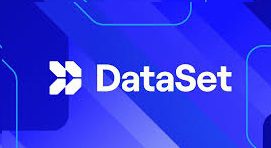Essential Things About Medical Datasets
What do you mean by Medical Datasets?
Healthcare analytics is based on data, especially Medical Datasets, and provides all of the benefits of healthcare dashboards.
Data standardisation is a critical pillar for successful and meaningful use of information and collaboration among healthcare specialists, service providers, insurers, and others due to the range of healthcare Dataset sources government organizations.
On both a national and federal level, the healthcare industry in the United States is extensively regulated. The 1996 Health Insurance Portability and Accountability Act (HIPAA) laid the groundwork for healthcare IT Medical Datasets standards.
According to Wikipedia, a data set is a collection of data. So, what exactly does that imply? A data set is a collection of linked sets of data made up of different items that may be processed as a whole by a computer. In general, a data set can be a single database table or a single statistical data matrix.

Why is Medical Datasets important?
The HIPAA Rules provide national standards for avoiding data theft of people’s electronic PHI and controlling personal health information use and sharing (PHI).
The HITECH Act, approved in 2009, intends to “improve health care quality, safety, and efficiency by supporting health IT, such as electronic health records (EHR) and private and secure electronic health information exchange.”
Both bills highlight Medical Datasets interchange standards such as uniform encoding requirements, medical templates for organizing information, document designs, and information models.
There are, of course, defined standards when it comes to data sets in healthcare. The purpose of healthcare data sets is to establish the data components that must be acquired for each patient and provide standard definitions for regularly used terminology.
Here is the list of the top 10 Medical Dataset:
Healthcare will be one of the most major beneficiaries of huge Medical Datasets and analytics. Here are a few great data sets to start playing with and developing your healthcare data analytics abilities with.
1. SEER-Medicare Health Outcomes Survey (surveillance, epidemiology, and end results) (MHOS) (http://healthcaredelivery.cancer.gov/seer-mhos/aboutdata/)
The SEER-MHOS is a survey-level analysis file that is arranged chronologically, starting with the date of the first survey administration. All Medicare Advantage members from Cohorts 1 to 14 who have completed at least one MHOS are included in the Medical Datasets file.
A baseline survey and a two-year follow-up survey are included in each cohort. A follow-up survey may or may not have been completed by beneficiaries who answered the baseline survey.
Because some beneficiaries were recruited from several cohorts, they received numerous baseline and follow-up questionnaires. The survey records are organized chronologically, beginning with the first completed survey and include the survey date.

2. MHEALTH Dataset Data Set (https://archive.ics.uci.edu/ml/datasets/MHEALTH+Dataset)
The MHEALTH (Mobile HEALTH) Medical Datasets contains recordings of 10 participants’ body movements and vital signs while doing various physical activities. Sensors attached to the subject’s chest, right wrist, and left ankle to track the motion of various body components, including acceleration, rate of rotation, and magnetic field orientation.
The sensor on the chest can also take 2-lead ECG readings, which may be utilized for basic cardiac monitoring, testing for different arrhythmias, or examining the effects of exercise on the ECG.
3. HealthData.gov (https://www.healthdata.gov/dataset?f[0]=type%3Adataset)
HealthData.gov has a goal is to make high-value health data more available to entrepreneurs, academics, and policymakers with the aim of improving everyone’s health. The site also includes tools and apps, as well as data sets from several federal departments.
4. Kent Ridge Bio-medical Dataset (http://datam.i2r.a-star.edu.sg/datasets/krbd/)
This is an online collection of high-dimensional biomedical data sets relevant to categorization, such as gene expression data, protein profile Medical Datasets, and genomic sequence data, that have recently been published in renowned publications like Science, Nature, and others.
Read more: https://24x7offshoring.com/blog/
5. data.gov (https://www.healthdata.gov/dataset)
The data sets on data.gov originate from all throughout the federal government, with the objective of improving everyone’s health and life.
6. Healthcare Cost and Utilization Project (HCUP) (http://hcup-us.ahrq.gov/databases.jsp)
The Agency for Healthcare Research and Quality’s Healthcare Cost and Utilization Project (HCUP, pronounced “H-Cup”) is a collection of healthcare statistics, software tools, and products. The United States’ biggest collection of longitudinal Medical Datasets.
7. Big Cities Health Inventory Data (https://bchi.bigcitieshealth.org/)
The Health Inventory Data Platform is an open data platform that allows users to access and analyze health data from 26 different sites for 34 different health indicators and six other demographic variables. It’s the sixth edition of a study first published by the Chicago Department of Public Health to offer epidemiologic statistics for big cities. The most recent BCHI was released in 2007. The Big Cities Health Coalition has created and released its inaugural edition.
8. Medicare Provider Payment and Utilization Data: Physicians and Others… (https://www.cms.gov/Research-Statistics-Data-and-Systems/Statistics-Trends-and-Reports/Medicare-Provider-Charge-Data/Physician-and-Other-Supplier.html)
This public data collection includes information on the services and procedures given to Medicare beneficiaries by physicians and other healthcare providers, as well as utilization and cost statistics. National Provider Identifier (NPI), Medical Datasets Common Procedure Coding System (HCPCS) code, and site of service are used to arrange payments and filed charges.
9. Child Health and Developmental Studies (http://www.chdstudies.org/research/information_for_researchers.php)
The Center for Child Health and Development Studies (CHDS) is dedicated to learning more about how health and disease are handed down through generations, not just via genes, but also through social, personal, and environmental factors.

10. The Human Mortality Database (HMD) (http://www.mortality.org/)
The Human Mortality Medical Datasets (HMD) was established to give academics, students, journalists, policy analysts, and anyone interested in the history of human lifespan extensive mortality and population statistics. The database now provides extensive information for over 35 nations. The Human Life-Table Database, which covers data for 40 nations, is a related project.
Clinical information anonymization and de-distinguishing proof
In this way, before you can involve clinical information for exploration or business purposes, you should dispose of individual identifiers and even pieces of them (like initials). There are two methods for making it happen — anonymization and de-recognizable proof.
Anonymization implies eliminating all delicate information for eternity. Simultaneously, de-distinguishing proof just scrambles individual subtleties and conceals them in isolated datasets. Afterward, identifiers can be reconnected with wellbeing data. The subsequent strategy requires more exertion than the first. However, in the two cases, the need to follow guidelines adds an additional move toward the readiness of datasets for AI.
Clinical information naming
Clinical or not, unstructured information — like texts, pictures, or sound documents — require naming or explanation to prepare AI models. This interaction includes adding spellbinding components — labels — to bits of information with the goal that a PC could comprehend what’s going on with the picture or text. Peruse our article on the most proficient method to coordinate information naming to find out about explanation instruments and best practices.
Discussing medical services information, the marking should be finished by clinical experts. Their administrations cost altogether higher each hour than on account of annotators without area mastery. This reality makes one more hindrance to producing quality clinical datasets.
Continue Reading, just click on: https://24x7offshoring.com/blog/
here are some of the most common types of sound recording:
- Mono: Mono recordings are the simplest type of sound recording. They only record one channel of sound, which means that they only capture the sound from one direction.
Mono sound recording
- Stereo: Stereo recordings capture sound from two directions. This gives the listener a more immersive experience, as they can hear sounds coming from both the left and right channels.
Stereo sound recording
- Surround sound: Surround sound recordings capture sound from all around the listener. This is achieved by using multiple speakers, which are placed in different locations around the listener.
Surround sound recording
- Ambisonics: Ambisonics is a type of surround sound recording that captures sound from all around the listener, but in a more natural way than traditional surround sound. This is achieved by using a special microphone that captures sound in a 360-degree pattern.
Ambisonics sound recording
- Digital: Digital recordings are the most common type of sound recording today. They use a digital format to store sound, which means that they can be easily stored and played back on computers and other digital devices.
Digital sound recording
- Analog: Analog recordings are an older type of sound recording that use an analog format to store sound. Analog recordings are often considered to have a more natural sound than digital recordings, but they are also more susceptible to noise and distortion.
Analog sound recording
These are just a few of the most common types of sound recording. There are many other types of sound recording, each with its own unique advantages and disadvantages.
here are some of the most common types of sound recording:
- Mono: Mono recordings are the simplest type of sound recording. They only record one channel of sound, which means that they only capture the sound from one direction.
Mono sound recording
- Stereo: Stereo recordings capture sound from two directions. This gives the listener a more immersive experience, as they can hear sounds coming from both the left and right channels.Medical Datasets
Stereo sound recording
- Surround sound: Surround sound recordings capture sound from all around the listener. This is achieved by using multiple speakers, which are placed in different locations around the listener.
Surround sound recording
- Ambisonics: Ambisonics is a type of surround sound recording that captures sound from all around the listener, but in a more natural way than traditional surround sound. This is achieved by using a special microphone that captures sound in a 360-degree pattern.Medical Datasets
Ambisonics sound recording
- Digital: Digital recordings are the most common type of sound recording today. They use a digital format to store sound, which means that they can be easily stored and played back on computers and other digital devices.Medical Datasets
Digital sound recording
- Analog: Analog recordings are an older type of sound recording that use an analog format to store sound. Analog recordings are often considered to have a more natural sound than digital recordings, but they are also more susceptible to noise and distortion.Medical Datasets
Analog sound recording
These are just a few of the most common types of sound recording. There are many other types of sound recording, each with its own unique advantages and disadvantages.
here are some of the most common types of sound recording:
- Mono: Mono recordings are the simplest type of sound recording. They only record one channel of sound, which means that they only capture the sound from one direction.
Mono sound recording
- Stereo: Stereo recordings capture sound from two directions. This gives the listener a more immersive experience, as they can hear sounds coming from both the left and right channels.
Stereo sound recording
- Surround sound: Surround sound recordings capture sound from all around the listener. This is achieved by using multiple speakers, which are placed in different locations around the listener.
Surround sound recording
- Ambisonics: Ambisonics is a type of surround sound recording that captures sound from all around the listener, but in a more natural way than traditional surround sound. This is achieved by using a special microphone that captures sound in a 360-degree pattern.Medical Datasets
Ambisonics sound recording
- Digital: Digital recordings are the most common type of sound recording today. They use a digital format to store sound, which means that they can be easily stored and played back on computers and other digital devices.Medical Datasets
Digital sound recording
- Analog: Analog recordings are an older type of sound recording that use an analog format to store sound. Analog recordings are often considered to have a more natural sound than digital recordings, but they are also more susceptible to noise and distortion.Medical Datasets
Analog sound recording
These are just a few of the most common types of sound recording. There are many other types of sound recording, each with its own unique advantages and disadvantages.Medical Datasets

 Afrikaans
Afrikaans Albanian
Albanian Amharic
Amharic Arabic
Arabic Armenian
Armenian Azerbaijani
Azerbaijani Basque
Basque Belarusian
Belarusian Bengali
Bengali Bosnian
Bosnian Bulgarian
Bulgarian Catalan
Catalan Cebuano
Cebuano Chichewa
Chichewa Chinese (Simplified)
Chinese (Simplified) Chinese (Traditional)
Chinese (Traditional) Corsican
Corsican Croatian
Croatian Czech
Czech Danish
Danish Dutch
Dutch English
English Esperanto
Esperanto Estonian
Estonian Filipino
Filipino Finnish
Finnish French
French Frisian
Frisian Galician
Galician Georgian
Georgian German
German Greek
Greek Gujarati
Gujarati Haitian Creole
Haitian Creole Hausa
Hausa Hawaiian
Hawaiian Hebrew
Hebrew Hindi
Hindi Hmong
Hmong Hungarian
Hungarian Icelandic
Icelandic Igbo
Igbo Indonesian
Indonesian Irish
Irish Italian
Italian Japanese
Japanese Javanese
Javanese Kannada
Kannada Kazakh
Kazakh Khmer
Khmer Korean
Korean Kurdish (Kurmanji)
Kurdish (Kurmanji) Kyrgyz
Kyrgyz Lao
Lao Latin
Latin Latvian
Latvian Lithuanian
Lithuanian Luxembourgish
Luxembourgish Macedonian
Macedonian Malagasy
Malagasy Malay
Malay Malayalam
Malayalam Maltese
Maltese Maori
Maori Marathi
Marathi Mongolian
Mongolian Myanmar (Burmese)
Myanmar (Burmese) Nepali
Nepali Norwegian
Norwegian Pashto
Pashto Persian
Persian Portuguese
Portuguese Punjabi
Punjabi Romanian
Romanian Russian
Russian Polish
Polish Samoan
Samoan Scottish Gaelic
Scottish Gaelic Serbian
Serbian Sesotho
Sesotho Shona
Shona Sindhi
Sindhi Sinhala
Sinhala Slovak
Slovak Slovenian
Slovenian Somali
Somali Spanish
Spanish Sundanese
Sundanese Swahili
Swahili Swedish
Swedish Tamil
Tamil Tajik
Tajik Telugu
Telugu Turkish
Turkish Ukrainian
Ukrainian Urdu
Urdu Uzbek
Uzbek Thai
Thai Vietnamese
Vietnamese Welsh
Welsh Xhosa
Xhosa Yiddish
Yiddish Yoruba
Yoruba Zulu
Zulu